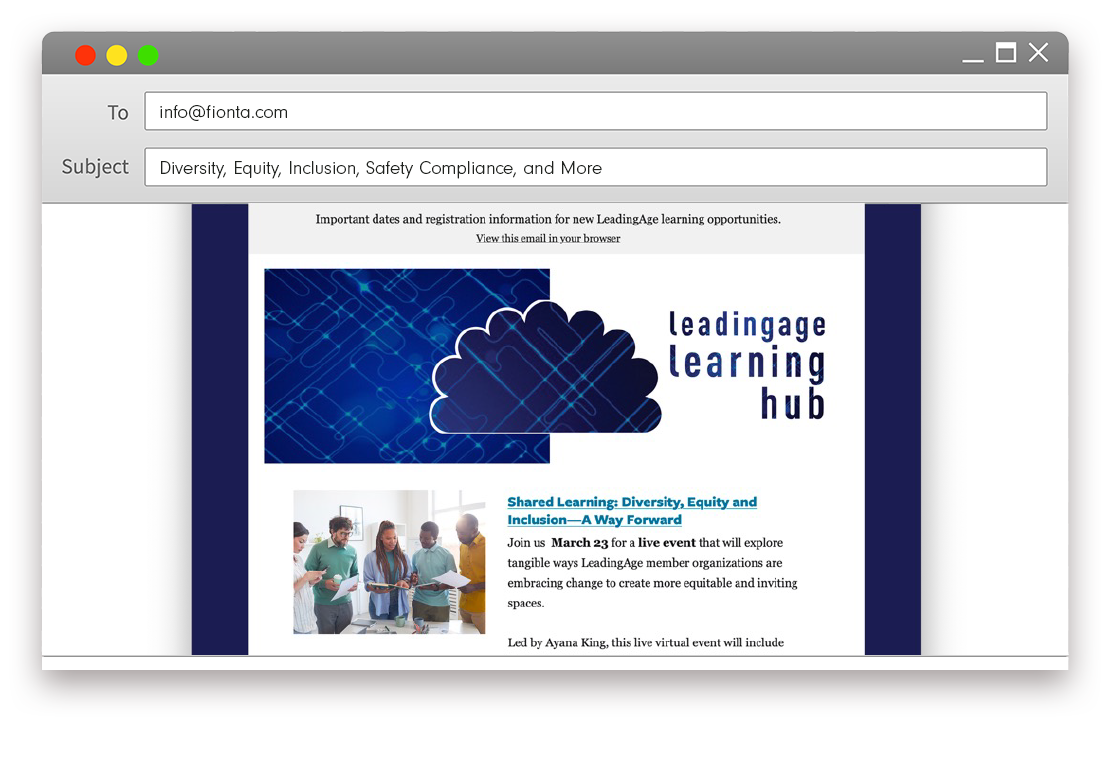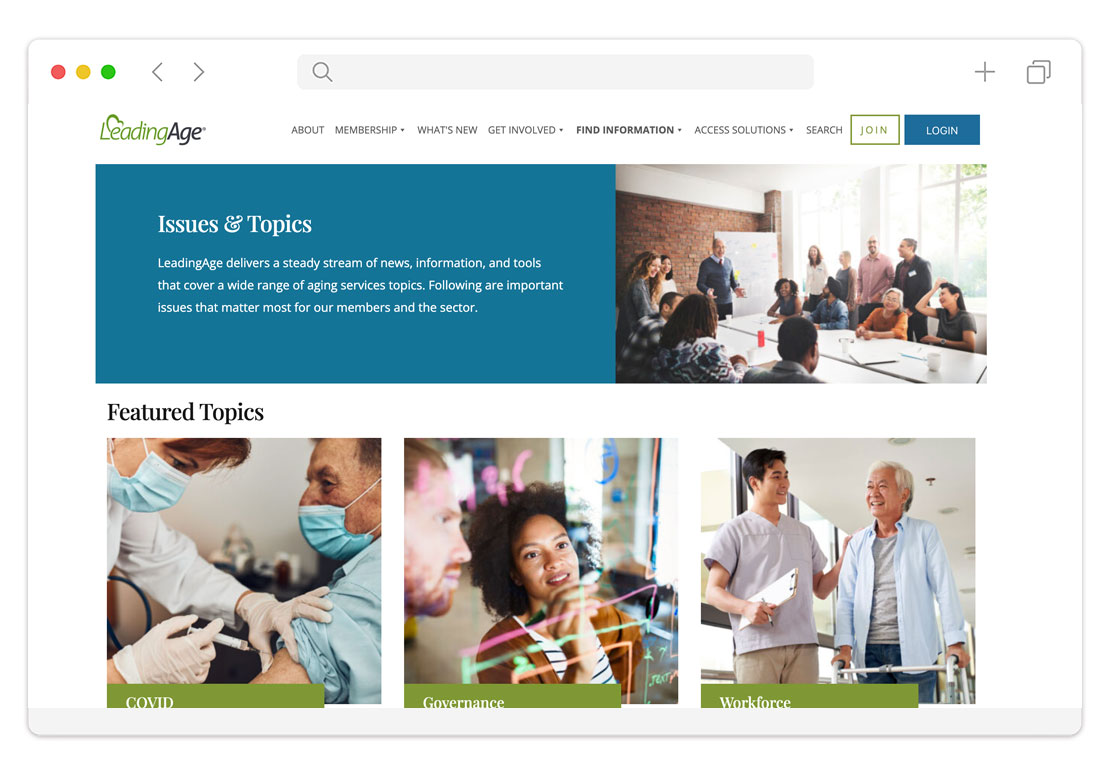LeadingAge, a community-focused organization that provides a full range of aging and disability services across the United States, accessed the existing Fíonta partnership to address the challenge of disjointed member communication, particularly during the critical time of the COVID-19 pandemic.
LeadingAge was dissatisfied with the overly complicated legacy solution that no longer met their marketing and member communication requirements. Staff needed help utilizing the tool to connect with members and manage mass email communications. They recognized the need for a solution that could scale with the trajectory of their growing organization and expanding marketing strategies.
The legacy solution did not seamlessly integrate with LeadingAge’s core Salesforce platform, causing problems with data hygiene. Membership data was often duplicated or unable to be synced between the two systems, leaving staff with increased responsibility to monitor data for errors or omissions manually.
The marketing team at LeadingAge faced challenges due to the need for more visibility and transparency in their member communication reports, resulting in gaps in their understanding of the impact of their marketing campaigns. Without clear reports to define successes and identify areas for improvement, LeadingAge encountered difficulties optimizing its efforts and leveraging effective strategies.
To streamline member communications, increase member engagement, and gain valuable insights into marketing ROI, LeadingAge implemented Marketing Cloud Account Engagement (formerly Pardot).
LeadingAge and Fíonta collaborated closely to leverage the power of Marketing Cloud Account Engagement (MCAE) and displace the legacy solution. They explored all potential applications of MCAE, established project priorities, and strategized the integration with the core Salesforce CRM.
Fíonta customized marketing templates to enhance marketing assets and provided the LeadingAge team with tailored training. This training enables the organization to effectively utilize MCAE, resulting in high levels of user adoption.
With seamless integration into Salesforce CRM, the concerns about data hygiene were mitigated. Tracking data and engagement became effortless, easily connecting Contacts and Campaigns. The native reporting functionality of MCAE facilitated easy reporting and analysis of marketing ROI. The solution provided a modern and intuitive platform that met the organization’s growing needs and improved overall operational efficiency.

Template-based emails allow departments to send emails without going astray of brand standards.
The MCAE implementation was a collaborative effort between Fíonta and LeadingAge to leverage and optimize MCAE, displace the legacy solution, and ultimately meet their growing organizational needs.
Fíonta provided customized templates and subsequent training to help enhance marketing assets and effectively utilize MCAE. Because of the emphasis on knowledge transfer through these training sessions, LeadingAge increased its user adoption rates.
The integration with Salesforce CRM promoted better data hygiene, effortless tracking of data, and engagement with Contacts and Campaigns.
Several teams across the organization now use Marketing Cloud Account Engagement and seamless integration with Salesforce means that staff has new confidence in their clean data. All data and engagement efforts are now effortlessly tracked to Contacts and Campaigns. LeadingAge staff can easily report on and analyze marketing ROI using Marketing Cloud Account Engagement native reporting functionality.

Sharing resources and issues through MCAE
Steering all project facets like budget, schedule, scope, and risk management while collaborating with technical leads on risk handling, our project managers serve as the primary liaison with clients, offering frequent updates on project progress.
Senior strategic advisors who focus on business transformation with domain expertise in functional, platform, and integration architecture. Our technical architects articulate solutions and design trade-offs to clients, guide the delivery framework, and oversee complex solution design and development, ensuring technical integrity and soundness of the final product.
Salesforce developers specialize in crafting and tailoring applications beyond what is available out-of-the-box using Salesforce-specific tools like Apex, Visualforce, and the Lightning Component Framework, and integrating with various systems through Salesforce APIs.
Dedicated to comprehending and documenting client business processes, identifying needs, and converting requirements into user stories. The business analyst works with technical leaders on the project to validate that the proposed solutions meet documented acceptance criteria and will satisfy project success metrics. Business analysts play a key role in planning for and executing user acceptance testing and training and change management when applicable.
Specializing in Salesforce and associated systems, our experts configure client instances following technical leads’ solutions, focusing on building functionality.
Transforming technical specifications into visually engaging web interfaces, our UI Designers collaborate with developers and UX consultants to ensure designs meet requirements, align with project scope, adhere to accessibility standards, and embody the organization’s brand identity.


